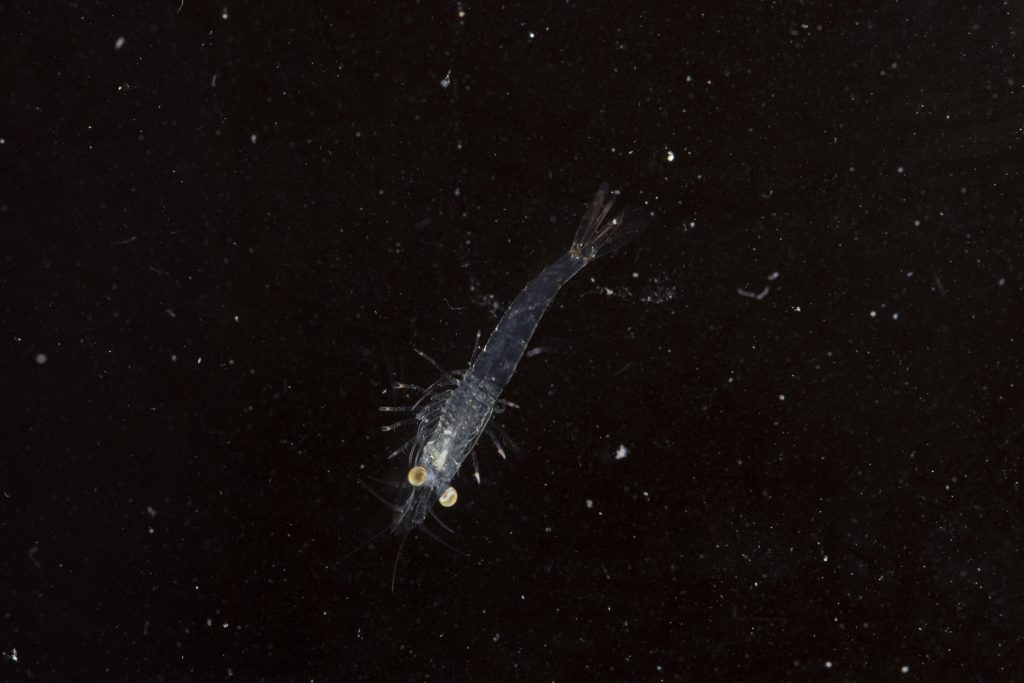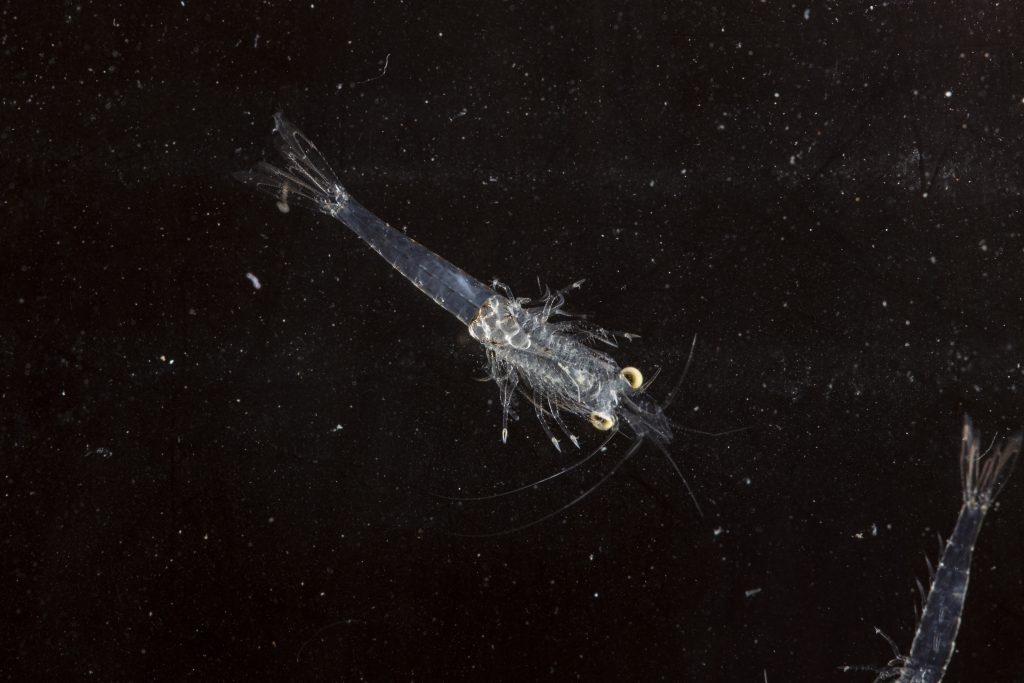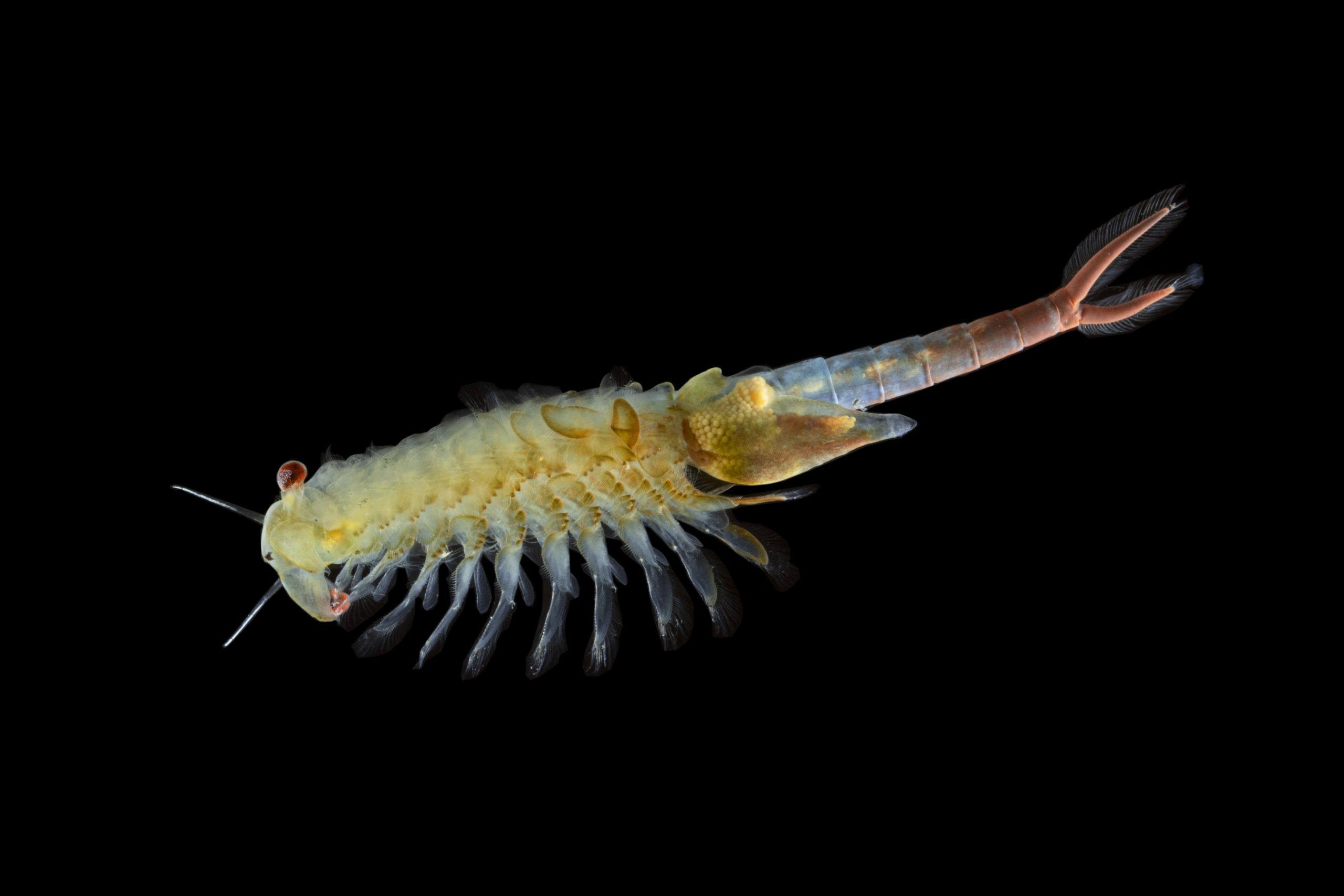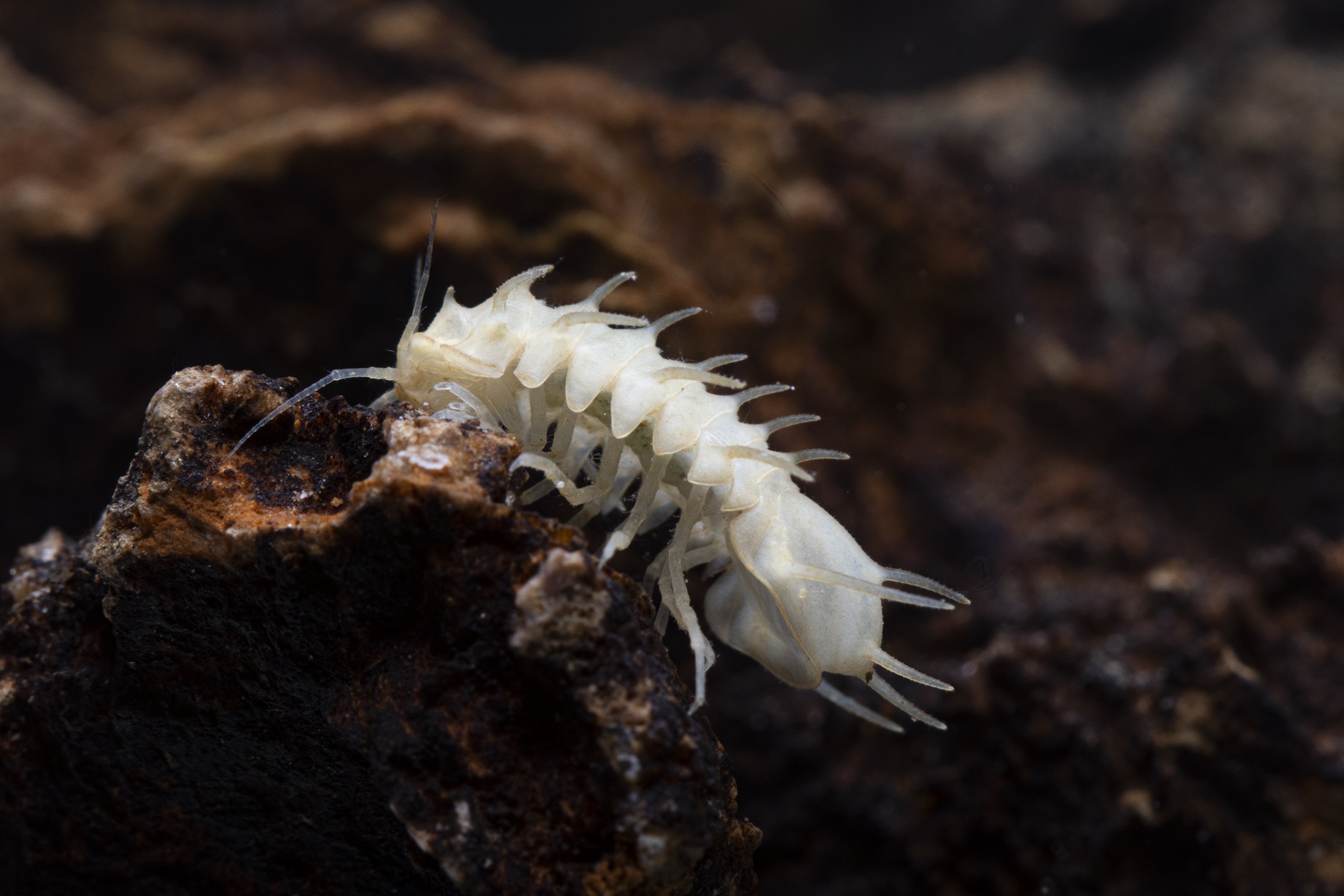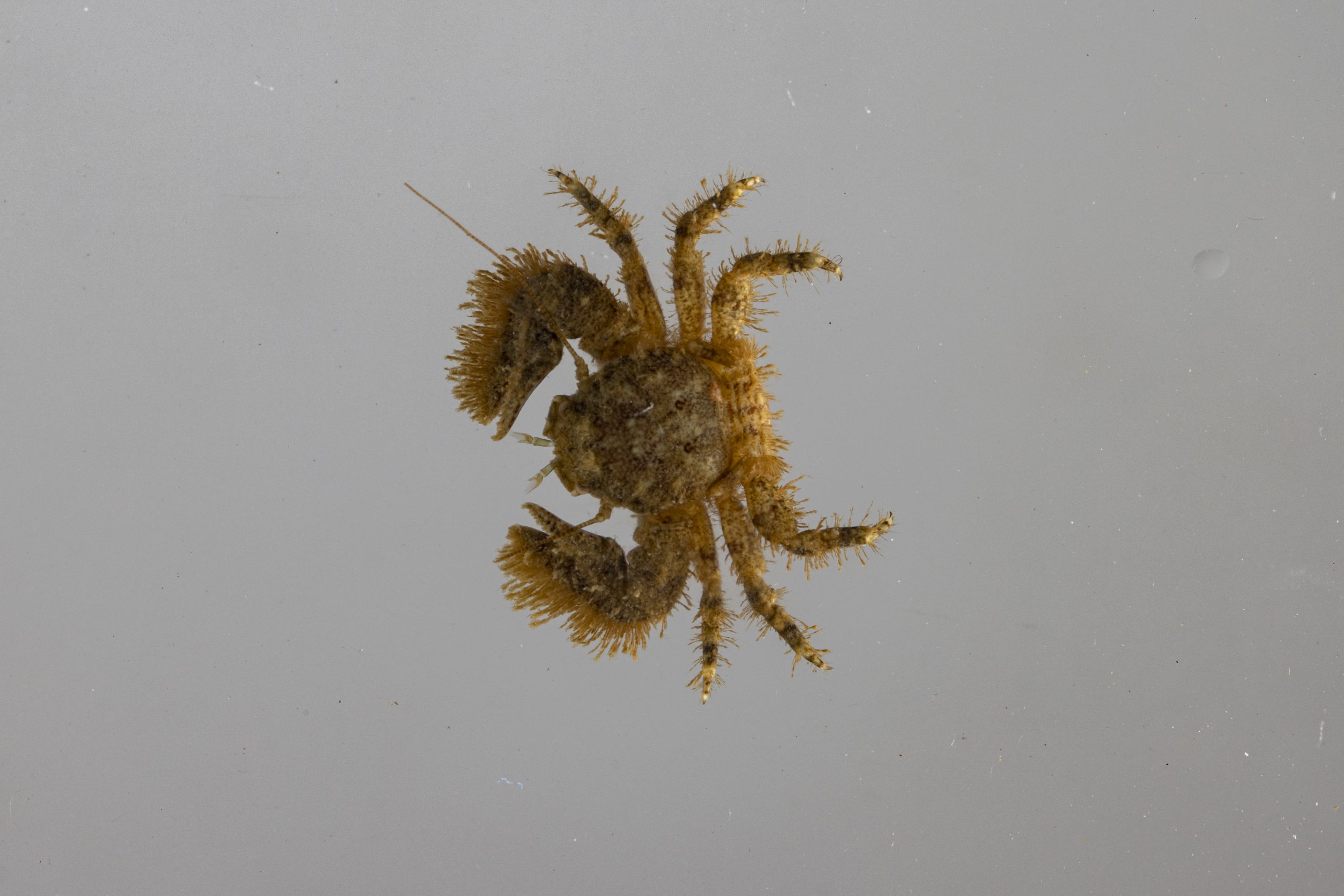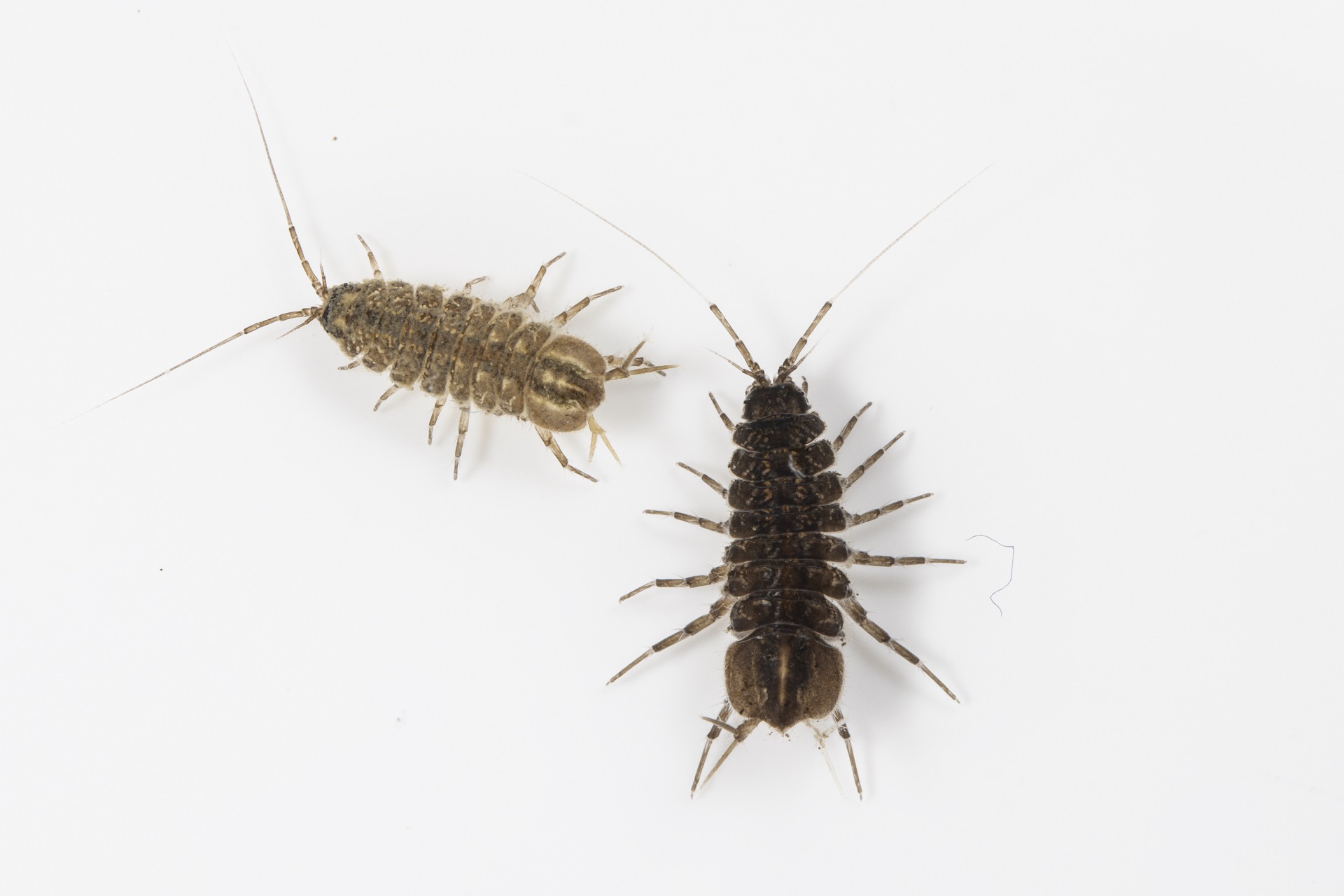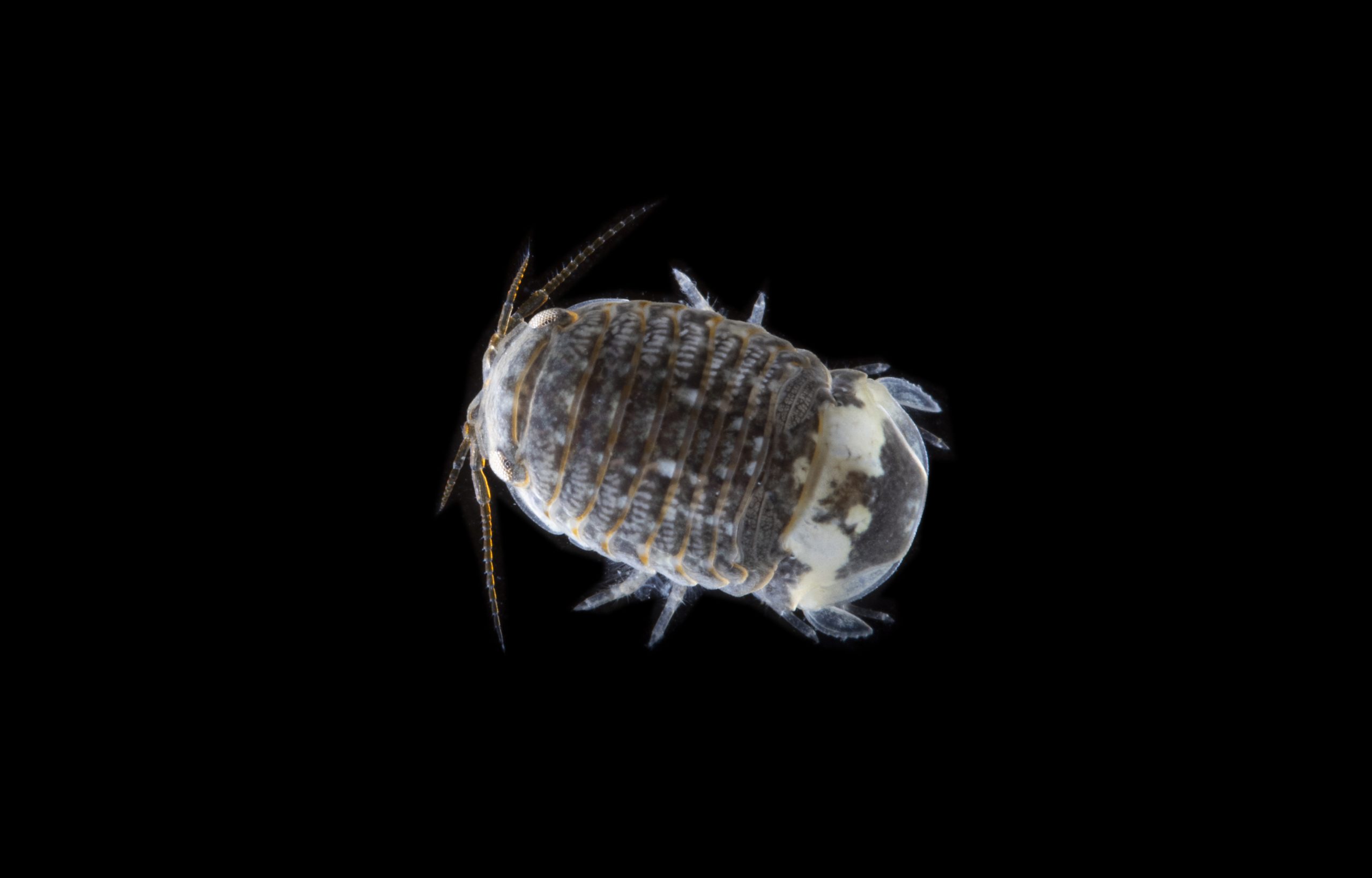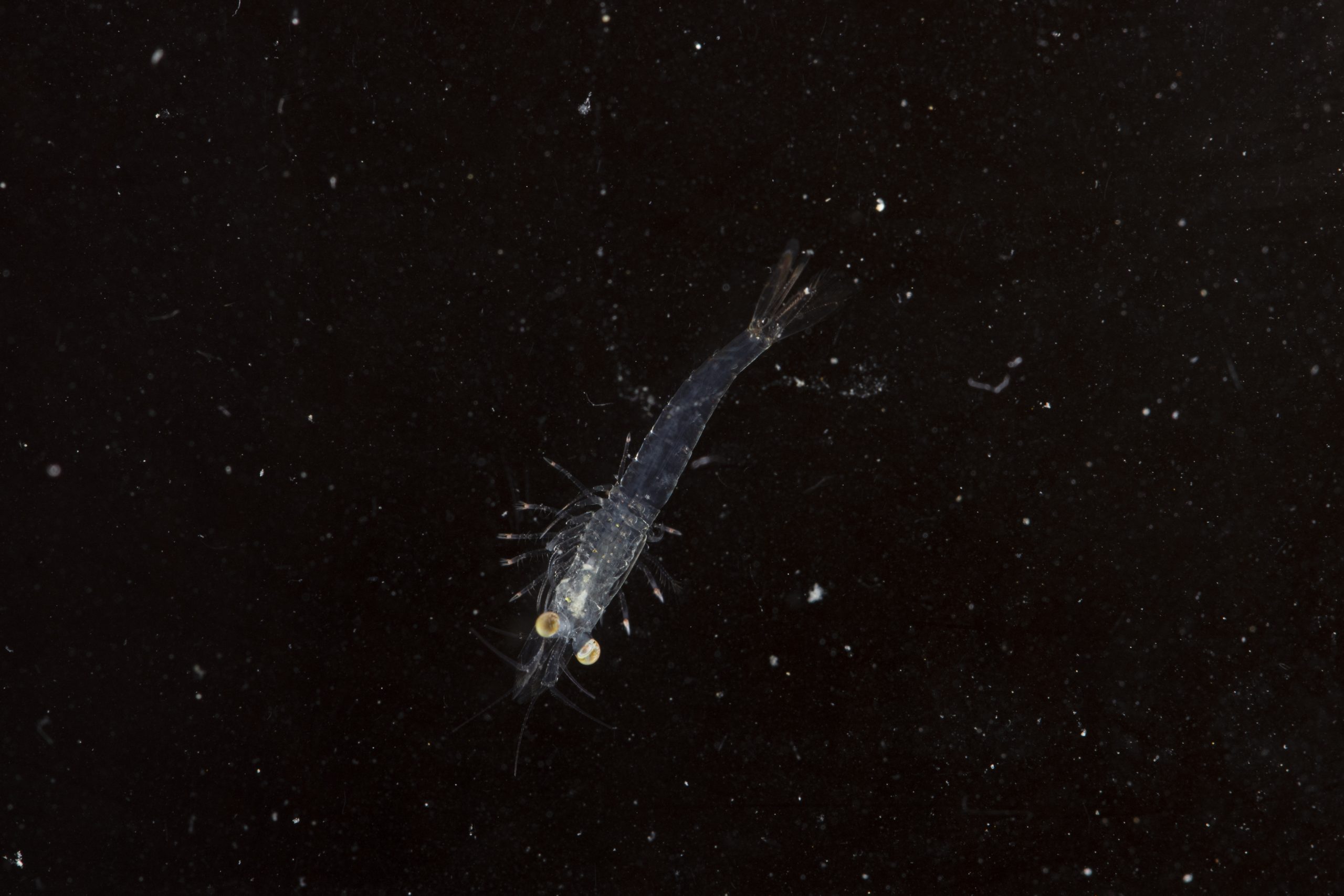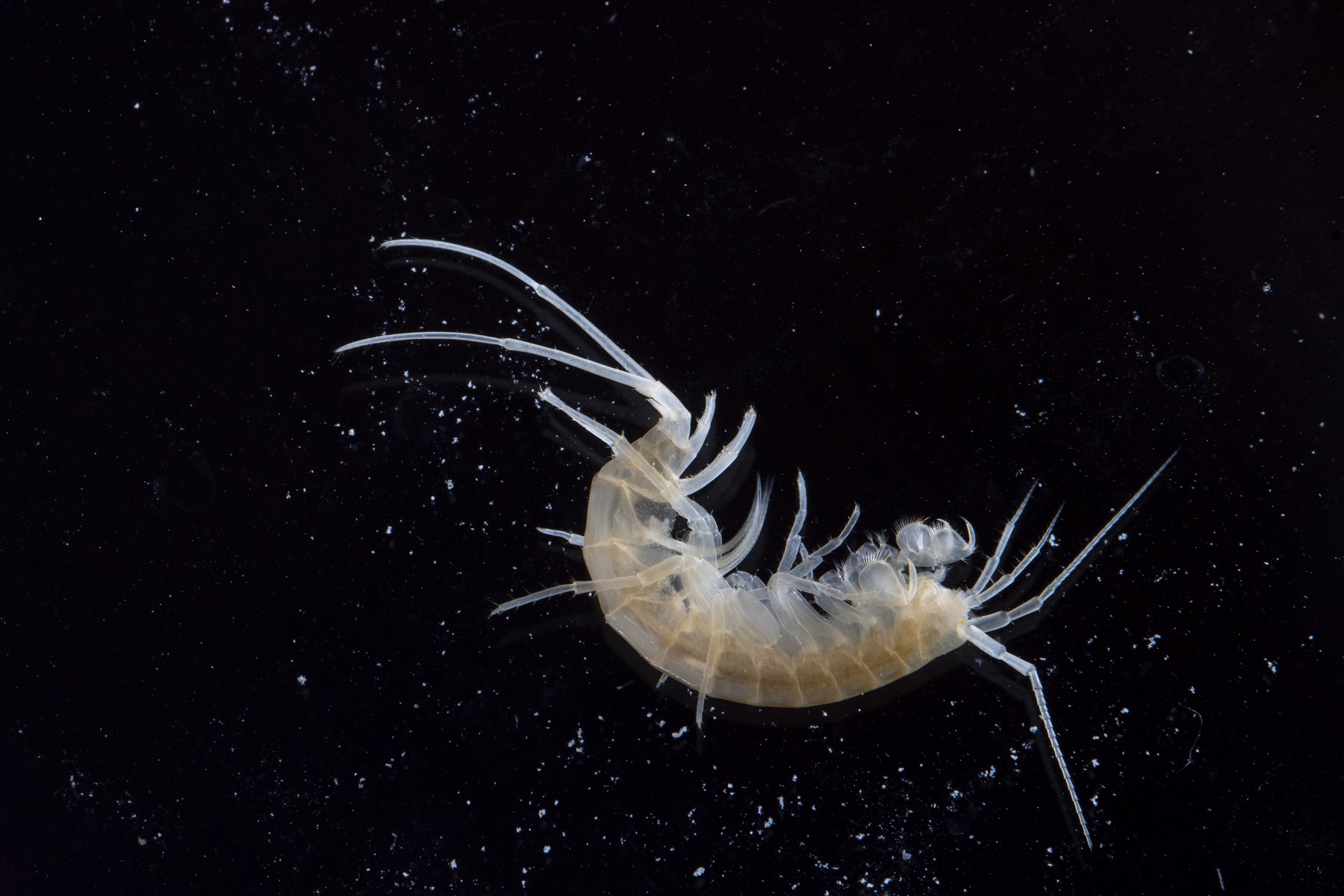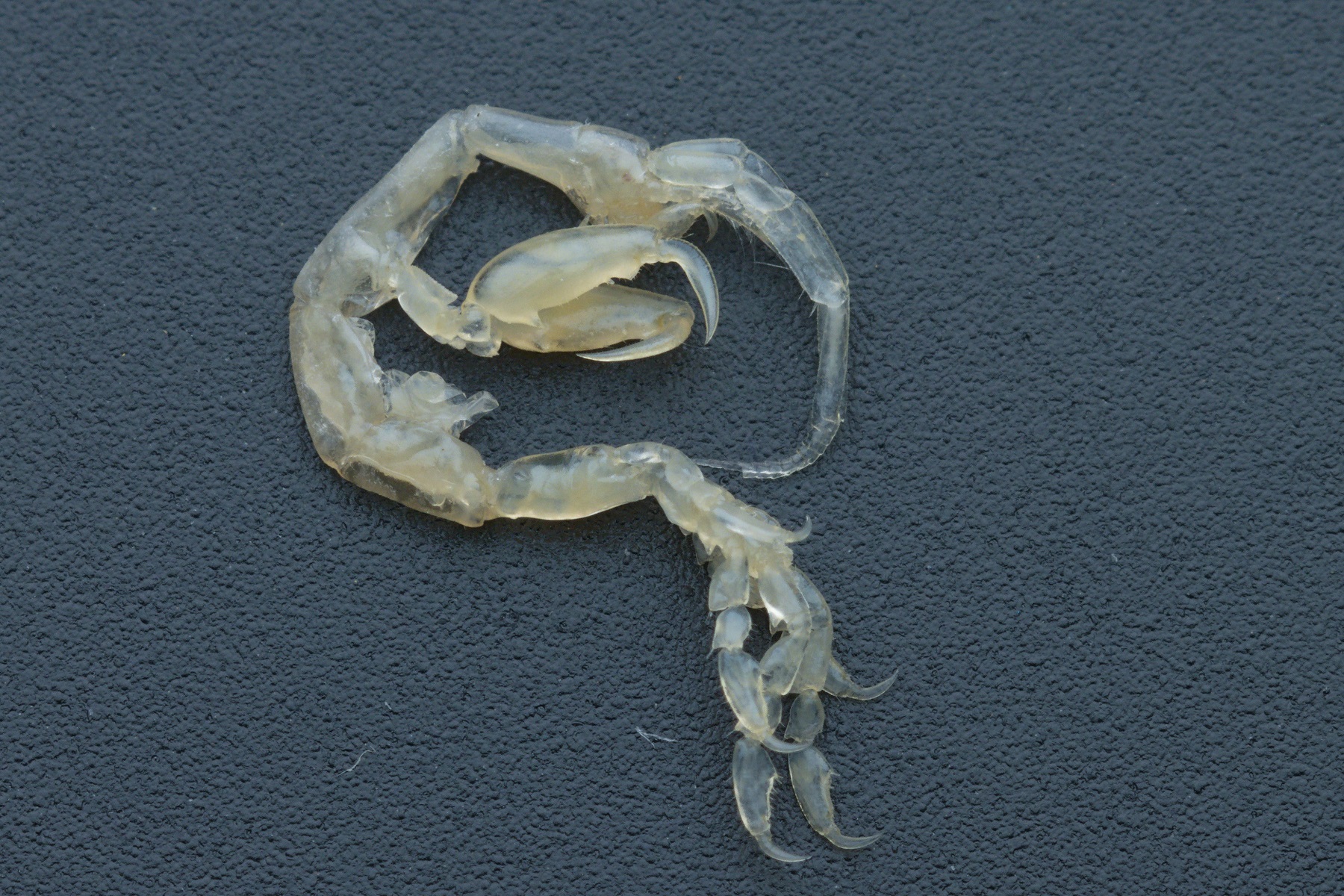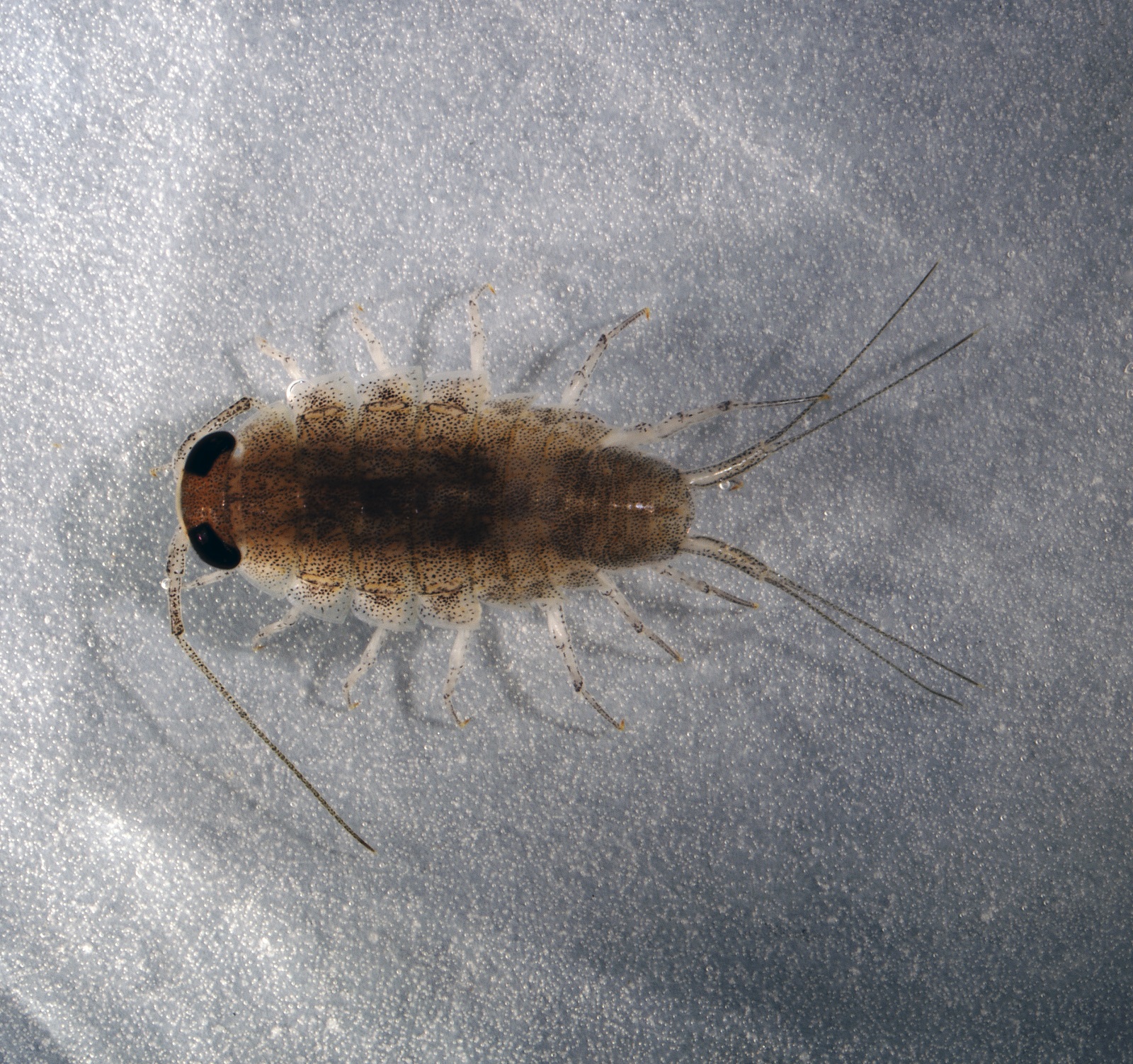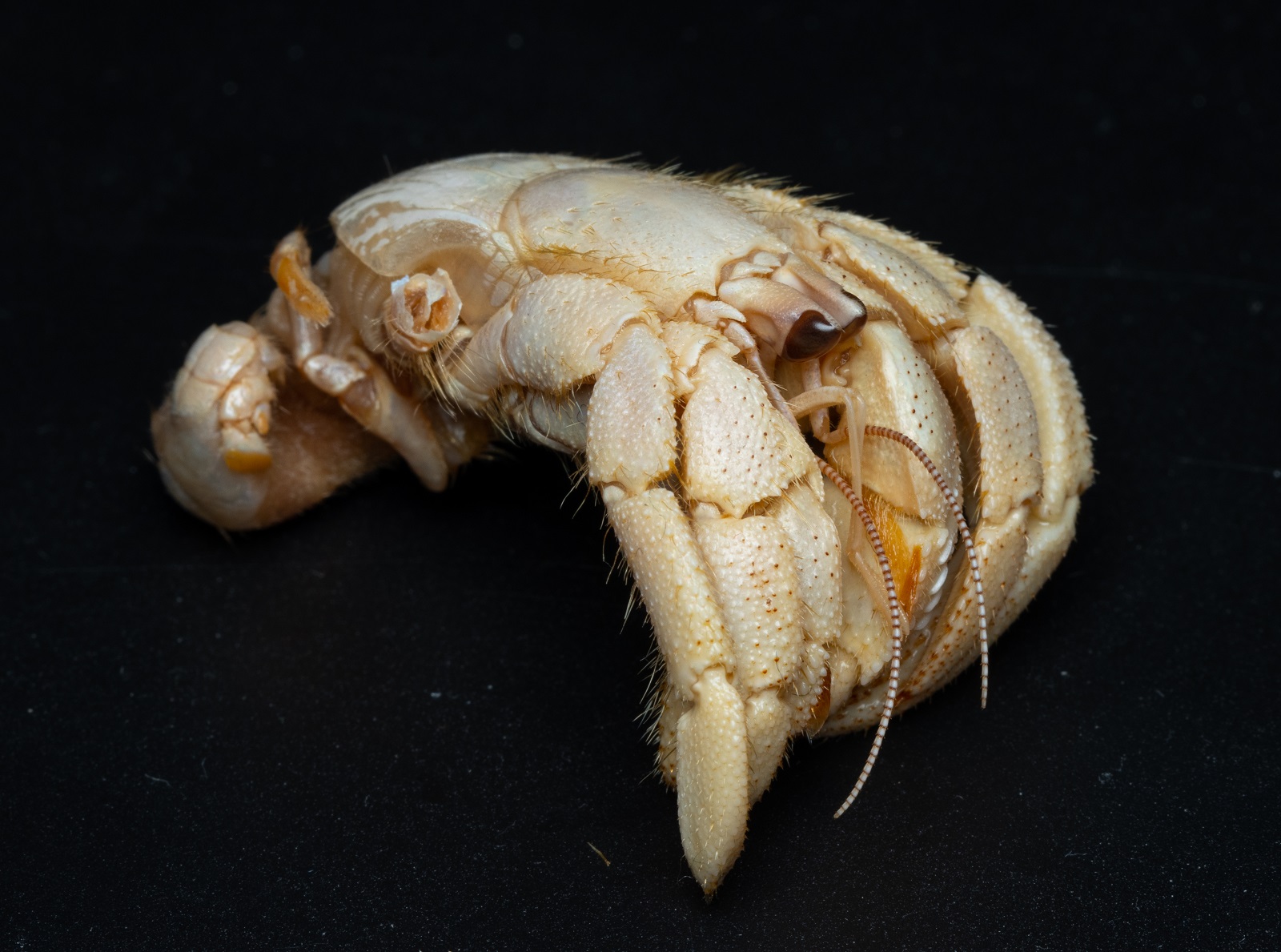- Crustaceans
Mysida
Opossum shrimp are small shrimp-like crustaceans belonging to Peracarida. They are generally transparent and small sized in the centimeter range with some reaching up to 8 centimeters in length. Their bodies consist of cephalothorax, pereon and abdomen (pleon).
The cephalothorax is comprised of an acron and 6-7 anterior body segments. The anterior region of the body is covered by a carapace, which is dorsally attached to a few of the anterior body segments; to four of them at most. The cephalothorax carries a pair of large, stalked compound eyes, two pairs of antennae (antennae I and II), a pair of mandibles, a pair of maxillae I, a pair of maxillae II and 1-2 pairs of maxillipeds.
The pereon consists of 6-7 body segments each carrying a pair of appendages (pereopods). The pereopods are biramous and are used in swimming with the exception of the last pair, which is reduced in females and modified as gonopods for the transfer of sperm in males. The gills are lacking.
The abdomen comprises 6 body segments and a telson. The pleopods are reduced and modified in males. The last pair of abdominal appendages are biramous uropods, which together with a telson form a tail-fan. The endopods of uropods generally contain statocysts.
The opossum shrimp are generally marine animals with cosmopolitan distribution. They are found at different depths, with the majority of species being benthic. Some species migrate higher in the water column at night, and a lesser number of species is exclusively pelagic. Species inhabiting the intertidal zone dig into the sediment during the low tide. A small number of species inhabit freshwater; one species successfully colonized also underground waters. In swimming, which is their primary type of locomotion, they aid with the exopods of pereopods.
Generally, they are filter feeders that create a water current with expopods of their pereopods and use their maxillipeds and other mouthparts to filter algae, zooplankton and detritus out of the water. Larger food particles are caught into a “basket” formed by the endopods of pereopods. A few species feed on carrion and some are also cannibalistic.
The opossum shrimp mate at night. The male in a few minutes transfers the sperm with his gonopods into the marsupium of the female. The sperm stimulates the female to lay eggs into the marsupium which are at the same time also fertilized. The offspring develops in the marsupium, which is formed by oostegites (leaf-like outgrowths at the coxae of pereopods).
More photos
Related arthropods

Authors
- Urban Bogataj,
- Gregor Bračko,
- Teo Delič,
- Cene Fišer,
- Žiga Fišer,
- Rok Kostanjšek,
- Rudi Verovnik,
- Miloš Vittori,
- Valerija Zakšek.
Students Vito Ham, Vesna Jurjevič, Gaj Kušar, and Adrijan Samuel Stell Pičman also participated in the project.
